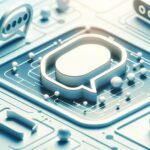In the rapidly evolving world of artificial intelligence (AI) and machine learning, the concept of Humans in the Loop (HITL) has become increasingly important. As AI systems become more sophisticated and autonomous, there is a growing need for human oversight and intervention to ensure accuracy, fairness, and ethical decision-making.
In this blog post, we’ll explore what HITL is, why it’s crucial, and how it’s being applied in various domains.
What exactly is is Humans in the Loop?
At its core, Humans in the Loop (HITL) refers to the integration of human intelligence and judgment into AI systems. It involves creating an iterative feedback loop between humans and machines, where humans provide input, guidance, and oversight to improve the performance and decision-making of AI algorithms.
As Andrew Ng, a renowned AI expert, explains,
HITL is about leveraging the complementary strengths of humans and machines. Machines excel at processing vast amounts of data and making rapid decisions, while humans bring contextual understanding, emotional intelligence, and ethical judgment
Think of it like a chef working with a high-tech kitchen assistant. The AI system can handle tasks like precisely measuring ingredients and maintaining optimal cooking temperatures, but the chef’s expertise and creativity are essential for crafting delicious and innovative dishes. Together, they create a winning combination.
Why is HITL Important?
HITL is crucial for several reasons. First and foremost, it helps ensure the accuracy and fairness of AI systems. Despite the impressive capabilities of machine learning algorithms, they can still make mistakes or exhibit biases, especially when dealing with complex, ambiguous, or edge cases. By involving humans in the decision-making process, HITL can catch and correct errors, mitigate biases, and ensure that AI systems are making appropriate and ethical choices.
Moreover, HITL is essential for maintaining accountability and transparency in AI systems. When AI algorithms make consequential decisions, such as in healthcare, finance, or criminal justice, it’s important to have human oversight and the ability to audit and explain those decisions. HITL provides a mechanism for human judgment and accountability, ensuring that AI systems are not operating as opaque “black boxes.”
What is the difference between human-in-the-loop and out of the loop?
In contrast to HITL, “out of the loop” refers to AI systems that operate autonomously without human involvement. While fully automated AI can be highly efficient and scalable, it lacks the contextual understanding, adaptability, and ethical judgment that humans bring to the table. HITL strikes a balance between leveraging the power of AI while retaining human control and oversight.
As Rohin Shah, a researcher at the Center for Human-Compatible AI, notes,
HITL is about creating a symbiotic relationship between humans and AI, where each plays to their strengths. It’s not about replacing humans with AI, but rather augmenting human intelligence and ensuring that AI remains aligned with human values and goals.
Picture a self-driving car. While the AI can handle tasks like navigation and obstacle avoidance, having a human in the loop to take control in unexpected situations or moral dilemmas is crucial for ensuring safety and ethical decision-making.
Applications of HITL
HITL is being applied across various domains to improve AI performance and ensure responsible deployment.
HITL in Social Media Platforms
One prominent application is content moderation on social media platforms. With the vast amount of user-generated content being shared every day, it’s impossible for human moderators to review everything manually. This is where HITL comes in.
AI algorithms can be used to automatically flag potentially inappropriate or harmful content, such as hate speech, violence, or misinformation. However, these algorithms can sometimes make mistakes or struggle with nuanced and context-dependent cases. By involving human moderators in the loop, platforms can ensure that flagged content is accurately reviewed and that appropriate actions are taken.
For example, Facebook employs a hybrid approach, where AI systems identify potentially problematic content, and human moderators review and make final decisions on whether to remove or keep the content.
HITL in AI Companies
Another application of HITL is in data annotation and labeling for machine learning. Training high-quality AI models requires vast amounts of labeled data. While some labeling tasks can be automated, many require human judgment and interpretation. HITL is used to involve human annotators in the process, ensuring that training data is accurately labeled and that edge cases or ambiguous examples are handled appropriately.
For instance, in medical image analysis, HITL is used to have expert radiologists review and label MRI scans or X-rays, providing ground truth data for training AI models to detect abnormalities or diseases.
It’s like having a team of expert detectives (human annotators) working alongside a highly efficient AI assistant to solve complex cases. The AI can quickly narrow down suspects based on patterns and evidence, but the human detectives’ intuition and experience are crucial for cracking the case.
What is an example of a human-on-the-loop?
An example of human-on-the-loop is in chatbots and conversational AI. While AI-powered chatbots can handle a wide range of user queries and provide automated responses, there are times when they may encounter complex, sensitive, or unexpected questions that require human intervention.
In a human-on-the-loop system, the chatbot first tries to handle the user’s query using its AI algorithms. If it determines that the query is beyond its capabilities or requires a more nuanced response, it escalates the conversation to a human agent. The human agent can then provide a personalized response, drawing on their empathy, contextual understanding, and domain knowledge.
This human-on-the-loop approach ensures that users receive appropriate and satisfactory responses, even in challenging or edge cases. It combines the efficiency of AI automation with the human touch and judgment needed for more complex interactions.
Imagine a customer support chatbot for a financial institution. While the AI can handle common queries like account balances and transaction history, a human agent can step in for more sensitive issues like suspected fraud or financial hardship, providing personalized guidance and support.
Implementing HITL in Your AI System
To implement HITL in your AI system, it’s important to design effective human-AI collaboration workflows. This involves identifying the tasks and decision points where human intervention is most valuable and defining clear protocols for human-AI interaction.
It’s also crucial to choose the right tasks for human intervention, focusing on areas where human judgment, contextual understanding, and domain expertise are essential. This may include tasks such as data labeling, edge case handling, quality assurance, or ethical decision-making.
When involving humans in the loop, it’s important to provide adequate training and support to ensure consistent and reliable human judgments. This may involve developing clear guidelines, providing examples and feedback, and monitoring human performance over time.
Think of it like assembling a superhero team. Each member has unique strengths and abilities, and it’s essential to assign them roles that maximize their potential. Regular training and communication ensure that the team works together seamlessly, tackling challenges that no individual could handle alone.
ChatCube: Harnessing the Power of HITL for Your Business
While the concept of HITL is transforming the AI landscape, it’s not just limited to large-scale, complex systems. Thanks to innovative platforms like ChatCube, businesses of all sizes can now leverage the power of HITL to create custom, ChatGPT-like chatbots tailored to their specific needs.
ChatCube is a no-code tool that empowers businesses to set up sophisticated, AI-powered chatbots in less than 5 minutes. By training on your company’s unique data, these chatbots can effectively handle customer support inquiries, generate leads, and provide personalized experiences – all without requiring extensive technical expertise.
One of the standout features of ChatCube is its ability to replicate the conversational prowess of ChatGPT. Powered by advanced language models and machine learning algorithms, ChatCube chatbots can engage in natural, context-aware conversations, understanding user intent and providing accurate, helpful responses.
But what sets ChatCube apart is its seamless integration of HITL principles. When the AI encounters a question it’s unsure about or a situation that requires human judgment, it can smoothly hand off the conversation to a human agent. This ensures that users always receive the best possible assistance, whether from the AI or a knowledgeable human representative.
This fusion of AI efficiency and human expertise makes ChatCube an exceptionally powerful replacement for traditional live chat applications. By automating routine inquiries and simple tasks, businesses can reduce response times, increase customer satisfaction, and free up their human agents to focus on more complex, high-value interactions.
Moreover, ChatCube’s HITL capabilities extend beyond just customer support. Sales teams can use ChatCube to qualify leads, answer product questions, and guide prospects through the sales funnel. Marketing teams can leverage ChatCube to deliver targeted content, conduct surveys, and gather valuable customer insights. The possibilities are endless.
As the business landscape becomes increasingly competitive, tools like ChatCube are revolutionizing the way companies interact with their customers. By harnessing the power of HITL and AI, businesses can deliver exceptional experiences at scale, foster deeper customer relationships, and drive sustainable growth.
If you’re looking to take your customer engagement to the next level, ChatCube is definitely worth exploring. With its user-friendly interface, powerful AI capabilities, and seamless HITL integration, it’s a game-changer for businesses of all sizes and industries.
So why wait? Sign up for ChatCube today and experience the future of customer interaction firsthand. Your customers (and your bottom line) will thank you.
Challenges and Considerations
While HITL offers significant benefits, it also comes with challenges and considerations. One key challenge is scalability and cost-effectiveness. Involving humans in the loop can be time-consuming and resource-intensive, especially for large-scale AI systems. It’s important to strike a balance between the level of human involvement and the efficiency and scalability of the overall system.
Another consideration is ensuring consistent human judgments. Human annotators may have different backgrounds, biases, and interpretations, which can lead to inconsistencies in labeling or decision-making. Implementing quality control measures, such as multiple annotators per task or consensus mechanisms, can help mitigate this issue.
It’s like managing a large, diverse team. Each member brings their own perspectives and experiences, which can be both a strength and a challenge. Establishing clear guidelines, fostering open communication, and implementing checks and balances are crucial for ensuring consistent and reliable outcomes.

The Future of HITL
As AI continues to advance and automate more tasks, the role of humans in the loop is likely to evolve. While some tasks may become fully automated, others may require even greater human involvement and oversight, especially in high-stakes domains such as healthcare, finance, or autonomous vehicles.
The future of HITL lies in developing more sophisticated human-AI collaboration frameworks, where humans and machines work together seamlessly, leveraging their complementary strengths. This may involve advances in explainable AI, where algorithms can provide clear explanations for their decisions, making it easier for humans to interpret and audit them.
Imagine a future where AI systems are not just intelligent but also transparent, accountable, and deeply aligned with human values. HITL will play a crucial role in shaping this future, ensuring that AI remains a powerful tool for enhancing human capabilities and addressing complex challenges.
Finally…
In conclusion, Humans in the Loop (HITL) is a critical concept in responsible AI development. By involving humans in the decision-making process, HITL ensures accuracy, fairness, and ethical oversight in AI systems. It is being applied across various domains, from content moderation to data annotation to conversational AI.
As we continue to develop and deploy AI systems, it’s crucial to prioritize human-centered design and implement effective HITL workflows. By striking the right balance between human intelligence and machine capabilities, we can harness the power of AI while ensuring that it remains aligned with human values and goals.
If you’re developing an AI system, consider how you can incorporate HITL to enhance its performance, accountability, and ethical alignment. By putting humans in the loop, you can build AI systems that are not only intelligent but also trustworthy and beneficial to society.
The future is bright for HITL and human-AI collaboration. As we navigate this exciting frontier, let’s keep humans at the center of the equation, working hand in hand with AI to build a better, more intelligent world.





